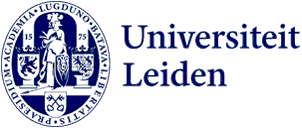
The quantum computer: it doesn't exist yet, but still we understand increasingly better what problems it can solve
How do we know what a quantum computer is good for when it hasn't been built yet? That's what PhD candidate Casper Gyurik investigated by combining two terms you often hear: quantum computing and machine learning.
‘I try to improve machine learning techniques using quantum,’ Gyurik summarises his research. Machine learning is a form of artificial intelligence in which a computer learns by itself. On normal - classical - computers, that is. Quantum computing, on the other hand, is a groundbreaking new technique for performing computations on a quantum computer. This uses the physics of the smallest particles. ‘A useful version of that doesn't exist yet, but we can already simulate it mathematically on a classical computer.’
'It's super inspiring that we all have a common goal.'
‘Great strides are made every year in building better quantum computers,’ says Gyurik. ‘Everyone is very enthusiastic, but we don't yet have a clear answer to the question of what we are going to do with them.’
The quantum computer: where do we stand?
The statement that the quantum computer does not yet exist is not entirely correct. There just isn't a useful quantum computer yet. Several big tech companies are competing to build the first useful quantum computer. For example, IBM is leading the way with a quantum chip of more than 1,000 qubits (computing units). Such a quantum computer will have many advantages, but there are also risks.
Classical versus quantum: which is faster?
‘Suppose you have a problem you want to solve. That data is nothing more than zeros and ones on a computer. I can then use a classical algorithm to get an answer to my question,’ Gyurik explains. ‘But now I am going to design a quantum algorithm to see if it produces the answer faster or more accurately. To do this, you have to translate the zeros and ones, put them into the quantum algorithm and translate the conclusions back to zeros and ones. A kind of quantum workaround. Then you can compare the results.’
In this way, the doctoral candidate hunts for problems for which the quantum route is faster. ‘My favourite example is topological data analysis (TDA). That extracts the essence from large data sets. For example, a group of people with everyone's age, ethnicity, hair colour, shoe size, and so on. TDA sees the data as a cloud of points with a particular shape. For certain shapes, we now suspect very strongly that quantum is indeed faster.’

From financial crises to the human brain
Gyurik does not yet dare to say what the applications will be. But he does have an idea: ‘With this method you can analyse time series, for example for the financial sector. This data cloud changes shape drastically just before a crisis, so TDA can see a crisis coming in advance.’ Another application lies in the area of complex networks. ‘I think one of the most interesting possibilities is the brain,’ he says. ‘You can describe that as a network of regions that are active during different activities. It might even be that one day we can better understand Alzheimer's with TDA, and there are signs that quantum can help with that.’
‘It's a fantastic time to be working on this topic. Larger, more useful quantum computers are coming along rapidly. Hopefully in the next few years we will get answers to what we can do with them. It's super inspiring that we all have a common goal,’ Gyurik reflects on his doctoral research. ‘I don't know yet what I will do next, but I will continue to work in quantum. That's for sure.’
